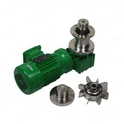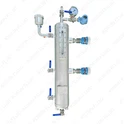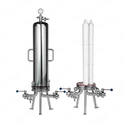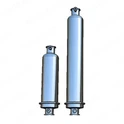Milk cooling tanks are one of the most important equipment in the dairy industry. They are used to keep the milk at the desired temperature to prevent spoilage and maintain its quality.
The components of a milk cooling tank include the following:
1. Tank Body: The main body of the cooling tank is typically made of stainless steel or aluminum. It is designed to maintain the temperature of the milk and keep it fresh.
2. Agitator: The agitator is a mechanical component that is used to stir the milk to prevent the formation of cream and to maintain an even temperature throughout the tank.
3. Insulation: Milk cooling tanks are insulated to maintain the temperature of the milk. The insulation can be made of different materials such as polyurethane foam or mineral wool.
4. Cooling System: The cooling system includes a compressor, evaporator, and condenser. The compressor is responsible for compressing the refrigerant while the evaporator removes the heat from the milk, and the condenser removes the heat from the refrigerant.
5. Milk Inlet and Outlet: The inlet and outlet for the milk are located at the top and bottom of the cooling tank, respectively.
6. Temperature Controller: The temperature controller is used to maintain a constant temperature inside the tank. It is typically located on the outside of the tank and can be programmed to adjust the temperature as needed.
In summary, milk cooling tanks are essential equipment that help to ensure the quality and freshness of milk. They are composed of several components including the tank body, agitator, insulation, cooling system, milk inlet and outlet, and temperature controller.





